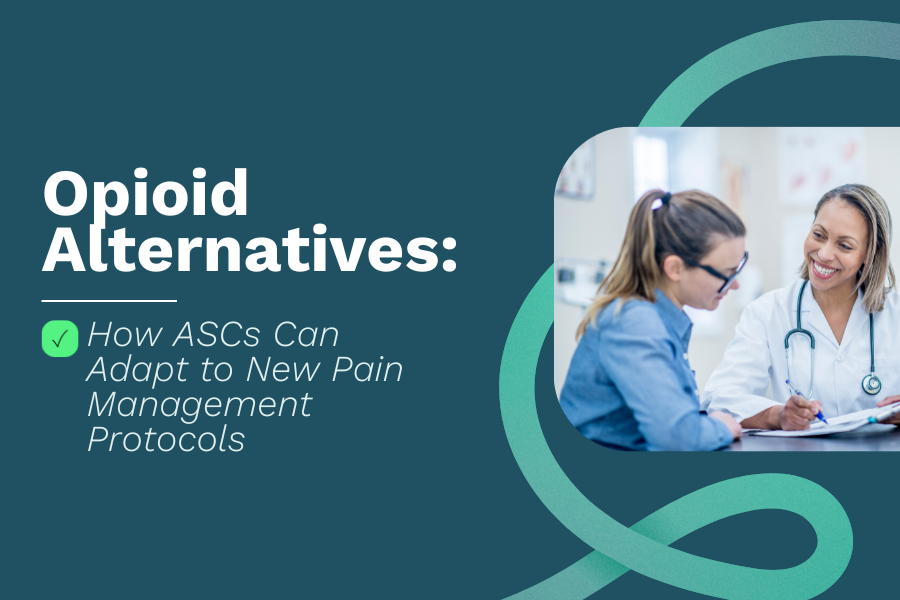Opioid Alternatives: How ASCs Can Adapt to New Pain Management Protocols
Pain management in surgical settings is evolving, and Ambulatory Surgery Centers (ASCs) are at the forefront of the shift. With a growing emphasis on reducing opioid use, facilities are adopting new pain management protocols that prioritize safer, non-opioid alternatives. These changes don’t just impact patient care—they also reshape how ASCs store, track, and administer controlled substances.
Let’s explore why opioid alternatives are gaining traction, how they impact medication management, and what ASCs can do to stay ahead.
The Move Away From Opioids in ASCs
For years, opioids were the go-to option for managing post-surgical pain, offering quick and effective relief. However, the growing awareness of opioid addiction, the risks of overprescription, and heightened regulatory oversight have forced ASCs to take a closer look at their pain management strategies. As a result, many facilities are shifting toward a more balanced approach—one that prioritizes patient safety while still ensuring effective pain control. To achieve this, ASCs are adopting new strategies such as:
Multimodal Pain Management: A combination of non-opioid medications like NSAIDs, acetaminophen, and muscle relaxants to provide effective pain relief with fewer risks.
Regional Anesthesia and Nerve Blocks: Targeted pain relief techniques that reduce the need for systemic opioids.
Non-Pharmacologic Therapies: Cryotherapy, physical therapy, and cognitive behavioral therapy are being integrated into post-op recovery plans to reduce dependence on medication.
While opioids are still necessary for certain procedures, their role in pain management is evolving. ASCs must now adapt to new protocols that prioritize alternatives while ensuring controlled substances are stored, monitored, and accessed securely. This shift means facilities need to rethink their approach to narcotic management—balancing reduced opioid use with strict regulatory requirements to prevent diversion and ensure patient safety.
What This Means for Narcotic Management
As opioid use declines, ASCs still need to comply with strict regulations for controlled substances. Facilities must balance security, compliance, and efficiency to ensure patient safety while integrating new pain management protocols. This evolving landscape brings several key changes that ASCs must navigate:
1. Lower Opioid Inventory, Higher Security Requirements
With fewer opioids in use, ASCs may not need to stock as much, but they still must follow strict storage and documentation rules. Digital narcotic cabinets provide secure, controlled access while maintaining full compliance with DEA and state regulations. At the same time, facilities must ensure that even a reduced opioid inventory is stored in a way that prevents unauthorized access while remaining easily accessible for approved staff when needed.
2. Diversion Prevention Remains a Priority
Even as opioid use decreases, drug diversion is still a serious risk. Healthcare facilities continue to be a target for drug diversion, making it essential for ASCs to invest in secure storage solutions. Tools like MedServe’s narcotic cabinets help prevent unauthorized access by tracking every interaction in real time, ensuring that only approved personnel can access controlled substances. Implementing digital access logs and biometric authentication further enhances security and minimizes the risk of diversion.
3. Smarter Documentation & Compliance
With a wider range of medications being used in multimodal pain management, accurate tracking is critical. ASCs must maintain precise records of both opioid and non-opioid medications to remain compliant with DEA and state regulations. Digital solutions simplify this process by automating record-keeping, integrating with EHRs, and generating real-time audit logs. This not only helps with compliance but also reduces administrative burden and minimizes errors in medication tracking.
4. More Efficient Medication Workflows
As pain management strategies evolve, medication workflows need to adapt. ASCs require storage solutions that provide secure yet efficient access to both opioid and non-opioid medications. This means ensuring that staff can quickly retrieve the medications they need without compromising security or compliance. Automated dispensing solutions, real-time inventory tracking, and streamlined medication retrieval processes help support evolving pain management protocols while maintaining efficiency.
A Smarter Approach to Narcotic Management
As pain management protocols evolve, adapting shouldn’t mean adding more work or compliance challenges for your ASC. MedServe’s secure narcotic cabinets are built to support these changes, helping your facility stay efficient, compliant, and secure without disrupting daily operations.
Key Benefits of MedServe Secure Narcotic Cabinets:
✔️ Regulatory Compliance: Fully compliant with DEA and state regulations for controlled substance storage.
✔️ Advanced Security: Tamper-proof locking, digital tracking, and real-time user authentication prevent diversion.
✔️ Seamless Integration: Supports evolving pain management protocols without disrupting workflow.
✔️ Long-Term Value: Durable, high-quality construction designed for ASC environments.
Take Control of Medication Security
As pain management protocols evolve, adapting shouldn’t mean adding more work or compliance challenges for your ASC. MedServe’s secure narcotic cabinets are designed to support these changes, ensuring your facility stays efficient, compliant, and secure while keeping medication management streamlined. With advanced security features and seamless integration into your workflow, our cabinets help prevent diversion, simplify tracking, and ensure regulatory compliance.
Let’s talk about how MedServe can support your ASC’s evolving needs. Book a demo today to see our secure narcotic cabinets in action.

